I. Introduction
In recent years, the rapid development of Web3 financial infrastructure is reshaping the operational rules of capital markets, with its programmability and openness reconstructing the sources of asset value, driving the emergence of a new class of asset forms. These new types of assets not only carry traditional equity values, i.e., the value mapping of platforms, protocols, or ecosystems; they also have clear utility values, which can be used to pay transaction fees, obtain service discounts, unlock access permissions, etc. This report collectively refers to such new types of assets as 'Value Functional Tokens,' denoting composite asset carriers that possess both 'asset attributes' and 'utility rights.'
The emergence of new types of assets is driving the evolution of the concept of 'value' itself, and the valuation methodology of value investors must also evolve accordingly, just as the early 21st-century internet revolution brought a brand new valuation logic for internet stocks. Early advocates of crypto asset value investment, such as John Pfeffer, proposed: 'The first principle of value investing is independent thinking based on reliable valuation logic. When new types of assets first appear, there is no corresponding valuation logic; value investors should strive to discover new valuation logic.'
We believe that the most representative value functional token currently is Binance Coin (BNB), the platform token of the world's largest cryptocurrency exchange, Binance. BNB not only maps platform value but also has actual utility value within the ecosystem, making it the earliest and most mature example of such assets. Binance completed the token economic design of BNB as early as 2017, defining the asset class of value functional tokens. In 2019, we applied the first principles of value investing using BNB as a template to propose a valuation framework based on the money equation (MV = PQ) to assess the value generation logic of BNB and value functional tokens.
In the past six years, we have released five reports and received numerous inquiries and feedback from investors and institutions. We continuously optimize our models, which have received preliminary validation in the market. We now organize this methodology, hoping to assist asset management institutions, investors, industry researchers, and project teams in their analyses and decisions regarding investment assessments, asset pricing, and token economic design for value functional tokens.
Web3 distributed ledger technology has already and will permanently change the foundation of capital markets. A more efficient and transparent Web3 financial system will undoubtedly become the core of future financial infrastructure. With the continuous improvement of global crypto asset regulatory systems, such as the recent passage of the CLARITY Act in the United States and the introduction of stablecoin legislation in both the US and Hong Kong, we believe we will see the emergence of a large number of value functional tokens represented by BNB, just as Tesla issues new 'stocks' in the form of value functional tokens on Ethereum or the Binance chain, which not only have 'equity value' but can also be used for discount charging at charging stations with ecological tokens. We expect value functional tokens to become the primary form of asset carriers in future capital markets!
II. Definition and Characteristics of Value Functional Tokens
The value functional tokens defined in this report refer to crypto assets that possess the following two types of value foundations simultaneously:
1. Asset attributes / equity-like attributes: Representing the value mapping of a certain platform, protocol, or ecosystem. Its value is usually driven by macro factors such as ecosystem scale, user growth, and transaction activity, logically similar to company equity.
2. Functional attributes/quasi-currency attributes: Perform actual functions in specific use cases, such as paying transaction fees, gas fees, staking, participating in governance, exchanging services, or enjoying platform discounts.
For this type of asset, the report chooses to build a valuation model based on the money equation (MV = PQ), mainly based on the following two considerations:
First, although value functional tokens possess certain 'equity-like' characteristics, their asset attributes differ from traditional securities. Taking BNB as an example, this token does not represent any form of equity or cash flow rights in Binance. From the perspective of ecological development, the founding team of Binance has, since the project's inception, bound the interests of all parties involved in the ecosystem (shareholders, management, users, and other ecosystem stakeholders) to the growth of ecological value resting on the unique token BNB, achieving the spirit of ecological co-construction and sharing that Web3 advocates. Since 2021, Binance has further adjusted the BNB burn mechanism from 'profit-linked buyback and burn' to 'automated burn based on on-chain transaction volume,' actively severing the direct connection between the token's value and the platform's financial performance to mitigate securities risks.
In 2025, the CLARITY Act released by the United States will further clarify the distinction between 'digital goods' and 'security tokens.' Under this regulatory direction, we believe that future value functional tokens will design towards the 'digital goods' direction. Although there is value support from traditional equity, the design avoids the standards of 'investment contracts' and securities tokens under the Howey test. Therefore, such tokens do not possess the legal characteristics of traditional equity assets; in terms of valuation methodology, they cannot be directly evaluated using cash flow discounted enterprise valuation models.
On the other hand, the value of functional tokens mainly comes from their actual use cases within the ecosystem. They perform functions such as payment, gas, staking, participating in new offerings, and governance within the platform, essentially acting as the circulating currency within the economy. Their value is influenced by multiple factors, including the scale of ecological economic activities, token usage frequency, and supply adjustment mechanisms. Therefore, compared to securities valuation methods, the money equation is more suitable for capturing the 'quasi-currency' attributes of these tokens and modeling the diverse sources of value within a unified logical system.
In summary, the core advantage of using the money equation to value value functional tokens lies in: this model provides a clear structure, quantifiable variables, and strong adaptability, covering all sources of value for such tokens comprehensively.
III. Building the Valuation Model
This methodology builds a systematic valuation model suitable for value functional tokens by combining the money equation (MV = PQ) with the discounted cash flow method (DCF):
MV = PQ: A structural logical framework for building token value generation
+
DCF: Discounting and summing 'monetary appreciation' brought by future ecological expansion to convert it into the current theoretical price of the token.
3.1 Introduction to the Money Equation (MV = PQ)
The quantity equation was proposed by economist Irving Fisher, explaining the relationship between total money supply and economic activity. Among them:
· M: Money supply (Money Supply)
· V: Money turnover rate (Velocity)
· P: Price Level
· Q: Total transaction volume or output value (Quantity)
In traditional macroeconomics, MV represents total money demand, and PQ represents nominal economic output, which should be consistent in a long-term equilibrium state.
We believe that for functional tokens with actual usage scenarios within the ecosystem, their economic role is highly similar to 'currency within the ecosystem.' Their value sources mainly include the expansion of ecological scale and changes in the token supply-demand structure, aligning closely with the logic of the money equation. This model is particularly suitable for tokens with the following characteristics:
1. As the main payment medium within the ecosystem (e.g., transaction fees, gas, etc.);
2. Possess a transparent issuance system, deflationary design, or lock-up mechanism that affects effective circulation volume;
3. Its value primarily derives from the development of ecological activities.
3.2 Structural Modeling Based on the Money Equation
Under the framework of MV = PQ, the theoretical value of the token is driven by two main paths:
· PQ: Total economic value of the ecosystem
· M × V: Represents the token supply and its turnover rate
Any variables affecting token value (such as user numbers, transaction volumes, burn mechanisms, etc.) ultimately affect token prices through their impact on PQ or M × V.
Among them, V (turnover rate) is a technical difficulty in modeling. Due to the lack of directly observable data, it is usually assumed that the previous market prices reflect a reasonable equilibrium state, and then V is deduced using known PQ and M and is assumed to remain stable or moderately increase or decrease in the future.

Theoretical price derivation:
Unlike general national fiat currencies, the prices of ecological tokens are usually denominated in USD. Therefore, in the model, the total circulating supply of the token (M) can be divided into:

Where:
M0: Actual circulation volume of the token
P*: The theoretical price of the token (in USD)
V: Token turnover rate
Arrange to get:

The total value of the ecosystem (PQ) divided by the token circulation and turnover rate represents the theoretical price of the token. This formula is the valuation basis of this model.
3.3 Introduce the discounted cash flow (DCF) for quantitative valuation
The money equation provides the logical framework for the token value generation mechanism but does not directly output prices. On this basis, we further introduce the Discounted Cash Flow (DCF) method. By predicting the growth of the total ecosystem economy and combining changes in token supply and circulation rates, we estimate the annual incremental value per token and discount and sum the future value to get the theoretical valuation. This process can also be understood as calculating the present value of 'monetary appreciation.'
The specific steps are as follows:
1. Forecast key variables (PQ, M₀, V)
Combine the token mechanism with business expectations to predict the ecological economic scale PQt, the actual circulation volume M0t, and the turnover rate Vt year by year.
2. Calculate the annual value increment of the token (ΔPt)
Annual new ecological value:
Corresponding new money demand: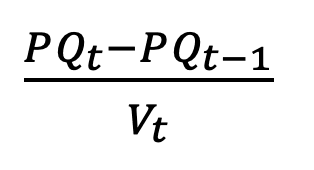
Corresponding token value appreciation: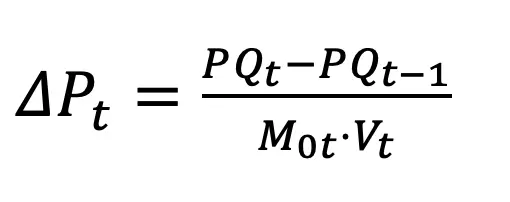
3. Discount Future Value Increments
Using a fixed discount rate (e.g., 10%), discounting and summing each year's ΔPt yields the total present value of appreciation, which is the theoretical price of the token:

Where:
r: Discount rate
NPV: Present value of total token appreciation
P*: The theoretical price of the token
IV. Valuation Case: Taking BNB as an Example
To demonstrate the applicability of this valuation method in practice, we take BNB as an example and apply our proposed 'MV = PQ plus DCF' model for quantitative valuation analysis.
4.1 BNB as a Value Functional Token: The Money Equation is the Best Valuation Model
BNB is the core value carrier of the Binance ecosystem (Binance Exchange + BNB Chain) and has two sources of value:
1. Asset attributes/equity-like attributes: The economic model of BNB integrates the value creation logic of traditional finance. Just as US stocks enhance shareholder equity through stock buybacks, BNB continuously reduces circulating supply through a quarterly burn mechanism, creating a long-term deflationary trend on the supply side, providing stable support for the token price. However, unlike traditional equity, the BNB burn mechanism is not tied to platform profitability but is anchored to its supply-demand relationship within the ecosystem. Therefore, BNB is not strictly an equity asset but possesses a 'quasi-equity' attribute—reducing the actual circulation of BNB through burns to establish a value mapping relationship between BNB and the Binance ecosystem.
2. Functional attributes/quasi-currency attributes: BNB has various functions in the Binance exchange and public chain ecosystem, including paying transaction fees, participating in new offerings, and serving as gas fees, governance participation, etc. BNB has essentially become the 'circulating currency' within the entire ecological system, and its value depends on changes in the ecological economic scale and the supply-demand relationship of the token within the ecosystem.
In summary, as an ecological circulation currency, the value of BNB is mainly determined by the money supply-demand relationship (MV) and the ecological economic value (PQ). Therefore, the money equation can comprehensively capture the core value drivers of BNB, making it the best valuation model.
4.2 Valuation Calculation of BNB
The analysis will revolve around the following three core steps:
1. Define and forecast key variables PQ, M₀, V
2. Calculate the annual value increment of the token ΔPt
3. Use the discounted cash flow method to discount and sum future incremental values
1. Define and forecast key variables: PQ, M₀, V
Total ecological economic value PQ
The Binance ecosystem mainly includes the Binance exchange and the Binance chain (BNB Chain), so PQ is the total value of economic activities driven by BNB in these two parts, mainly including:
1. In the income from spot and derivative trading fees at the centralized exchange (CEX) Binance, the portion paid with BNB (transaction volume × fee rate × proportion paid in BNB (assumed to be 50%));
2. BNB Chain gas fees (total gas income on-chain).
In the calculations, it is assumed that the annual growth rate of the ecological economy is the following values, summarizing to obtain the future nominal total economic value PQt each year.
· 2025-2027: 25%, 15%, 10% respectively;
· 2028 and beyond: Long-term stable growth rate of 3%.
Total circulating tokens M₀
According to the Binance white paper and on-chain data, the initial total supply of BNB was 200 million tokens. After deducting the team's locked holdings (about 80 million tokens) and the historically accumulated burn amount (about 11.65 million tokens), the current theoretical circulating supply is about 108 million tokens. Considering Binance's current burn mechanism and future burn predictions, the circulating volume is expected to maintain this level between 2025 and 2027 and gradually stabilize to 100 million tokens in the long term. This is the maximum supply available for trading in the secondary market without ecological usage.
On this basis, further exclude the four major ecological lock-up scenarios (payment of transaction fees, node staking, wealth management products, long-term value holding) to obtain the actual circulating supply M₀t.
Turnover rate V
The turnover rate of BNB is difficult to measure directly. We use a reverse calculation method: by using the actual market price, PQ, and M₀ for 2024, we deduce the benchmark value of V as 0.57. For future years, a ±10% range can be set, and its impact on valuation can be verified in subsequent sensitivity analyses.
2. Calculate the annual value increment ΔPt
According to the formula from the previous section:
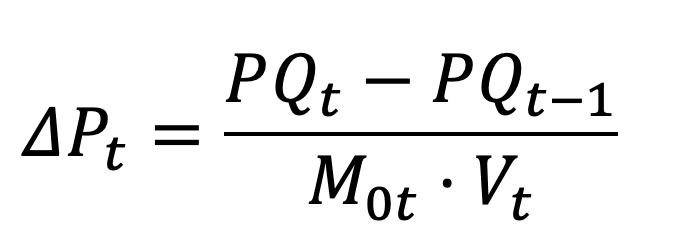
We calculate the new ecological value year by year and divide it by the actual circulation scale and turnover rate of BNB for that year to obtain the theoretical value increment per token each year.
Based on actual data from 2024, assuming growth rates of 25%, 15%, 10%, and a long-term rate of 3% over the next three years:

3. Value discount summation: Calculate theoretical valuation
Using a 10% discount rate, we discount each year's value increment ΔPt to obtain the total present value of all future 'monetary appreciation':
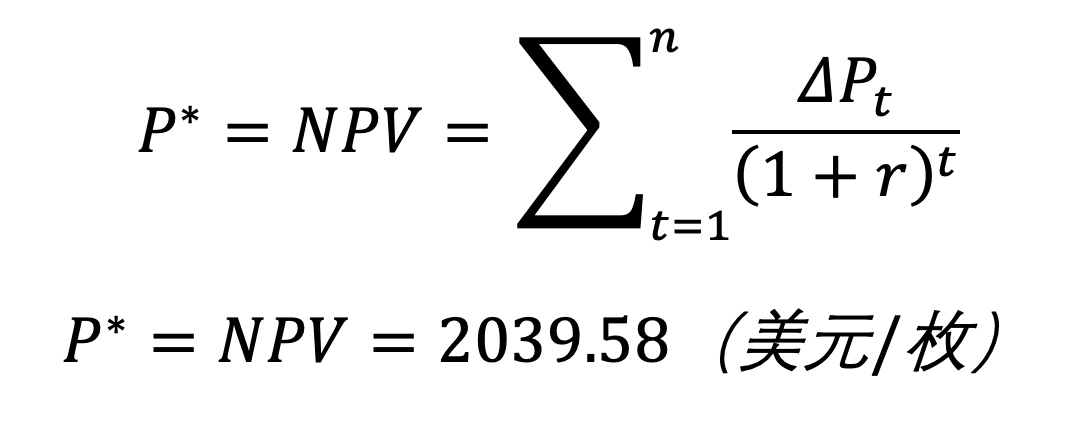
4.3 Hash Global Past Four Reports - BNB Target Price Achievement Timeline
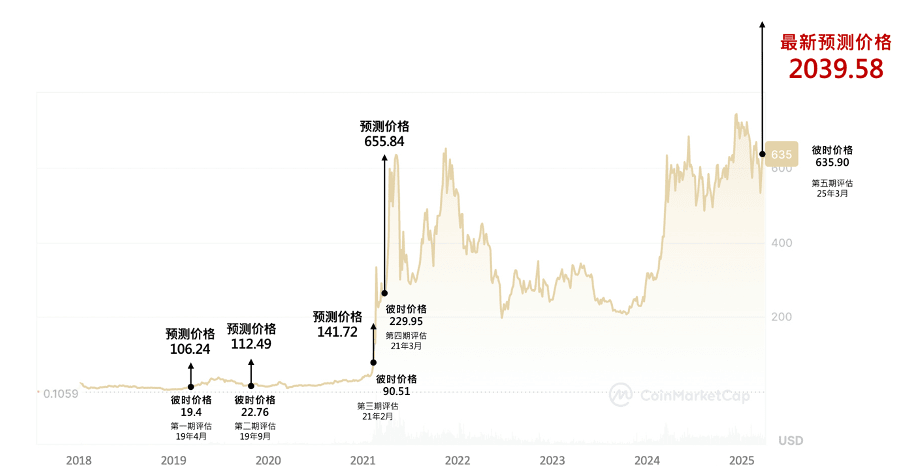

V. Conclusion
This report uses BNB as a case study to propose the concept of 'Value Functional Tokens' as an asset class and constructs a systematic valuation framework based on the money equation. We hope this framework can provide reference and inspiration for project teams' token economic design, investors' value judgments, and researchers' model assessments.
As the Web3 industry is still in a phase of rapid evolution, we will continue to update our models and research results. We welcome investment institutions, researchers, and developers to discuss and provide feedback on the report's content.
For report updates, model details, or further discussions, please visit our official website or contact team members. We look forward to your feedback and suggestions:
This report aims to share information and does not constitute any investment advice, nor should it be seen as a guarantee of future market performance. This report is based on Hash Global's independent research and public information, and we have made every effort to ensure the accuracy and completeness of the data and analysis. However, we make no commitments or guarantees regarding the applicability of the final results or opinions. Investing in crypto assets carries high uncertainty and volatility, and readers should fully understand the related risks and assume all responsibilities before making any investment decisions. Hash Global and its affiliates do not bear any direct or indirect losses arising from the use of this report's content.
As of the release date of this report, Hash Global and its managed funds hold some BNB assets, and related analyses and opinions may be influenced by the holdings. We will continue to track related assets based on market dynamics and update research content as necessary.
